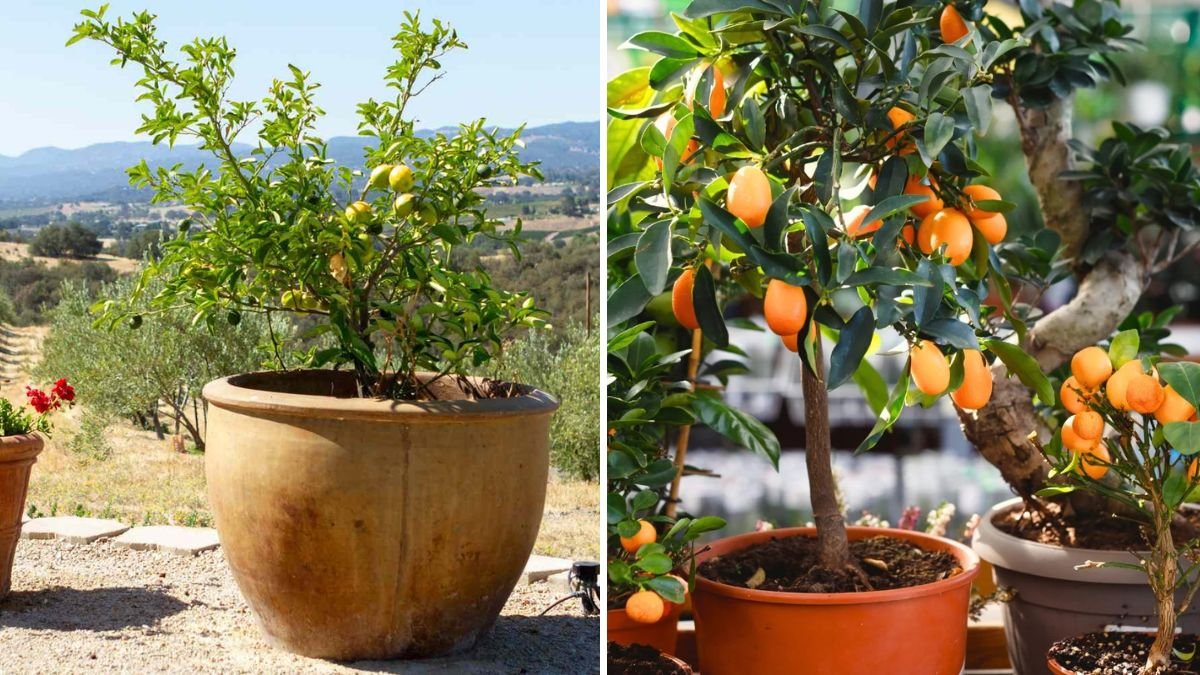Growing fruit in containers is an excellent solution for gardeners with limited space, balconies, patios, or urban environments. Container gardening allows for flexibility, control over soil conditions, and the ability to move plants to optimize sunlight exposure. Many fruit-bearing plants thrive in pots when given proper care, producing abundant harvests despite spatial constraints.
This article explores 7 fruit-bearing plants perfect for containers, providing detailed guidance on plant selection, container choice, soil, watering, fertilization, pruning, and care to maximize fruit yield.
1. Strawberries (Fragaria × ananassa)
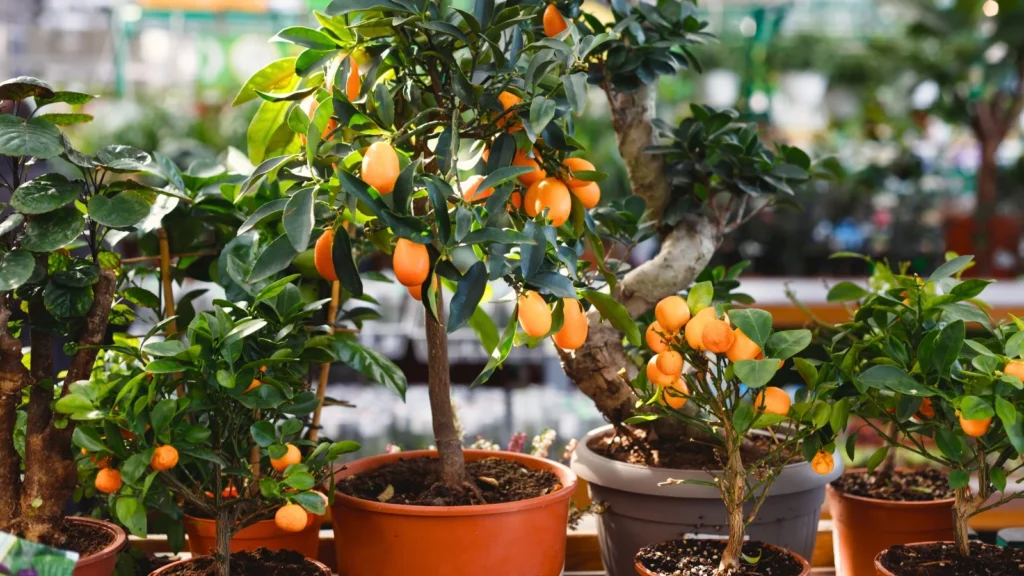
Strawberries are compact, versatile, and ideal for container cultivation:
- Container Choice: Hanging baskets, shallow pots, or strawberry pots with multiple pockets work well.
- Soil Requirements: Well-draining, nutrient-rich potting mix with organic compost. Avoid heavy soils that retain water.
- Sunlight Needs: Full sun for at least 6–8 hours daily.
- Watering: Keep soil consistently moist but not soggy; mulch can reduce evaporation.
- Fertilization: Use balanced liquid fertilizer every 2–3 weeks during the growing season.
- Pruning: Remove runners selectively to encourage strong fruiting plants.
- Benefits: Strawberries produce multiple harvests per season, are compact, and can be grown in small spaces or vertical planters.
Tip: Ensure drainage holes in containers to prevent root rot.
2. Dwarf Citrus Trees (Lemon, Lime, Orange)
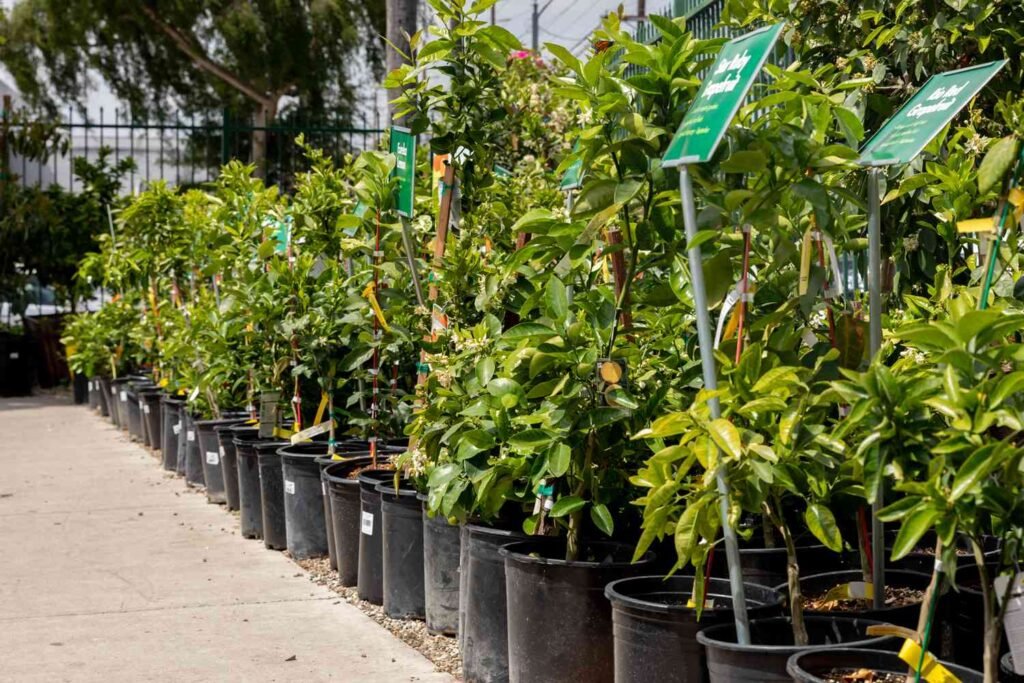
Dwarf citrus varieties are perfect for patios, balconies, or sunny indoor spaces:
- Container Choice: Large, deep pots (12–18 inches diameter) to accommodate roots. Use clay, plastic, or ceramic pots with drainage holes.
- Soil Requirements: Well-draining, slightly acidic soil with organic matter. A mix of potting soil, sand, and perlite works well.
- Sunlight Needs: 8–10 hours of direct sunlight daily.
- Watering: Deep watering once or twice a week; allow the top inch of soil to dry slightly between waterings.
- Fertilization: Use a citrus-specific fertilizer high in nitrogen and trace minerals monthly during the growing season.
- Pruning: Remove dead, crowded, or weak branches to improve airflow and encourage fruiting.
- Benefits: Dwarf citrus trees produce fragrant blossoms and delicious fruits while remaining manageable in size.
Tip: Move containers indoors or to a sheltered area during frost-prone months.
3. Blueberries (Vaccinium spp.)
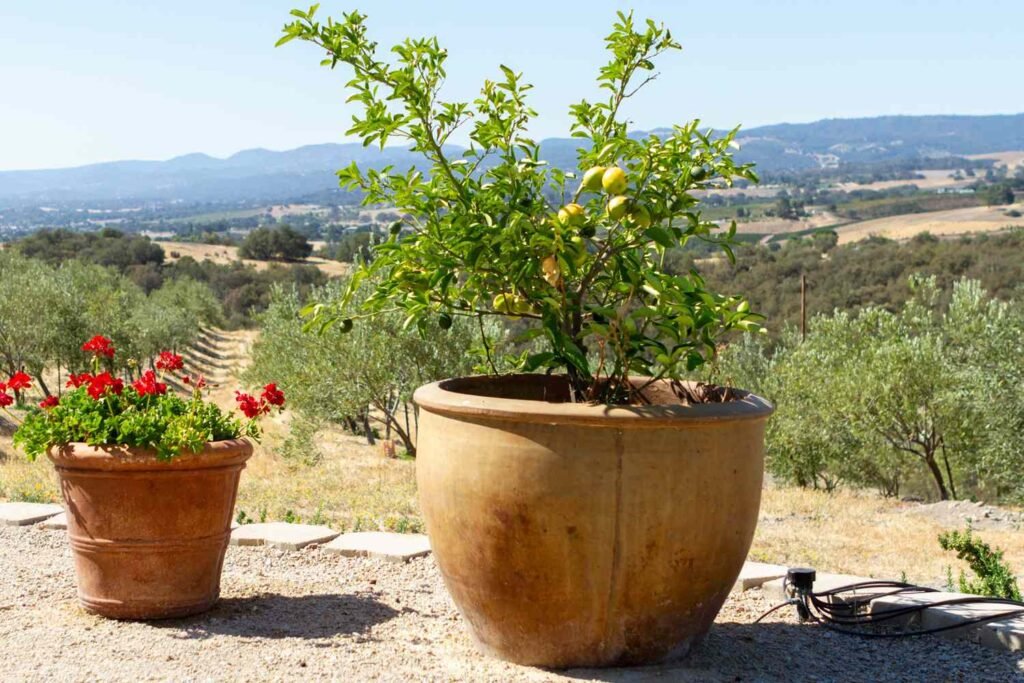
Blueberries are ideal for container gardening because of their compact root systems:
- Container Choice: Deep pots (at least 12 inches) to accommodate acidic soil.
- Soil Requirements: Acidic soil with pH 4.5–5.5, enriched with peat moss or pine bark.
- Sunlight Needs: Full sun (6–8 hours per day) for optimal berry production.
- Watering: Keep soil consistently moist; blueberries are shallow-rooted and sensitive to drought.
- Fertilization: Use acid-loving plant fertilizer every 4–6 weeks.
- Pruning: Prune in late winter or early spring to remove old, weak, or unproductive branches.
- Benefits: Container-grown blueberries allow urban gardeners to enjoy fresh, antioxidant-rich berries even with limited space.
Tip: Plant two or more varieties for cross-pollination to increase fruit yield.
4. Tomatoes (Solanum lycopersicum)
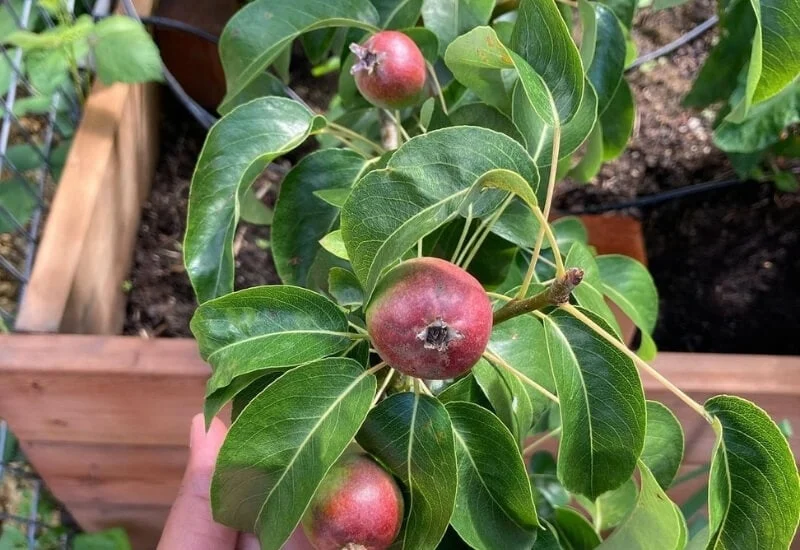
Tomatoes are one of the most popular container fruit plants due to their versatility and high yields:
- Container Choice: Large pots or grow bags, at least 12–16 inches deep.
- Soil Requirements: Well-draining, nutrient-rich potting mix with compost or organic matter.
- Sunlight Needs: Full sun for 6–8 hours daily.
- Watering: Deep watering 2–3 times per week, more during hot periods; avoid wetting leaves to prevent disease.
- Fertilization: Use a balanced fertilizer with higher phosphorus content during flowering and fruiting stages.
- Pruning: Pinch suckers to direct energy to main fruiting branches. Stake or cage plants for support.
- Benefits: Container tomatoes provide fresh harvests, save garden space, and can be grown on balconies or terraces.
Tip: Choose determinate varieties for smaller containers or indeterminate types for larger setups.
5. Figs (Ficus carica)
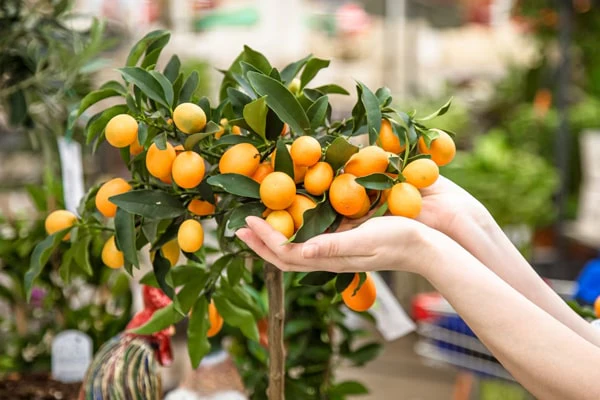
Figs are hardy, productive, and well-suited for container growth:
- Container Choice: Large, deep pots (18–24 inches diameter) with drainage holes.
- Soil Requirements: Well-draining soil enriched with compost or organic matter.
- Sunlight Needs: Full sun for at least 6–8 hours daily.
- Watering: Moderate watering; allow the top layer of soil to dry between watering sessions.
- Fertilization: Apply balanced fertilizer during active growth; reduce feeding during dormancy.
- Pruning: Remove dead or crossing branches; shape plant to control size and encourage fruiting.
- Benefits: Fig trees produce sweet, nutrient-rich fruits and adapt well to container life with proper pruning.
Tip: Bring containers indoors or into a sheltered spot during winter in colder climates.
6. Raspberries (Rubus idaeus)
Raspberries can thrive in large containers, providing fresh, flavorful berries:
- Container Choice: Deep containers (at least 12–15 inches) with adequate drainage.
- Soil Requirements: Well-draining, slightly acidic soil enriched with compost.
- Sunlight Needs: Full sun for 6–8 hours daily.
- Watering: Maintain consistently moist soil; avoid waterlogging.
- Fertilization: Use a balanced fertilizer monthly during the growing season.
- Pruning: Remove old canes after fruiting to encourage new growth; thin young canes to avoid overcrowding.
- Benefits: Container raspberries allow gardeners to enjoy sweet berries in limited spaces without traditional garden beds.
Tip: Use trellises or stakes to support canes and improve air circulation.
7. Dwarf Pomegranate (Punica granatum)
Dwarf pomegranates are compact, attractive, and highly productive in containers:
- Container Choice: Medium to large pots (12–18 inches diameter) with good drainage.
- Soil Requirements: Well-draining, sandy or loamy soil with organic matter.
- Sunlight Needs: Full sun for at least 6–8 hours daily.
- Watering: Moderate watering; allow top inch of soil to dry between watering. Avoid excessive moisture.
- Fertilization: Use balanced fertilizer every 4–6 weeks during the growing season.
- Pruning: Remove dead or crossing branches; shape plant for better sunlight penetration and fruit development.
- Benefits: Dwarf pomegranates produce edible fruits and ornamental flowers, making them both decorative and productive.
Tip: Place in a sunny balcony spot for optimal fruiting.
8. Tips for Successful Container Fruit Gardening
Proper care and attention maximize yield and plant health:
a. Container Size and Mobility
- Choose containers that provide enough root space for growth.
- Use pots with wheels or lightweight materials for easy repositioning to capture sunlight or avoid harsh weather.
b. Fertilization and Soil Management
- Container plants deplete nutrients faster than in-ground plants; regular fertilization is essential.
- Refresh the topsoil layer or repot every 1–2 years for continued fertility.
c. Watering
- Container plants dry out faster, especially in warm, sunny conditions.
- Use efficient watering methods such as self-watering pots, drip irrigation, or water retention techniques like mulching.
d. Pest and Disease Management
- Monitor for pests such as aphids, spider mites, or fungal infections.
- Prune regularly to improve airflow and prevent overcrowding.
e. Sunlight and Microclimate
- Ensure plants receive adequate sunlight based on their specific requirements.
- Consider reflective surfaces or shading as needed to create optimal microclimates on balconies.
9. Benefits of Growing Fruit in Containers
Container fruit gardening offers several advantages:
- Space Efficiency: Perfect for small apartments, terraces, or patios.
- Mobility: Containers can be moved to optimize sunlight, protect from frost, or reposition for aesthetic purposes.
- Soil Control: Easier to maintain proper soil conditions and pH for each plant type.
- Pest and Disease Management: Reduced risk of soil-borne diseases and easier pest monitoring.
- Continuous Harvest: Many container fruit plants are highly productive and can provide a steady yield throughout the growing season.
- Aesthetic Appeal: Adds greenery, color, and a productive focal point to urban spaces.
Container gardening brings fresh, homegrown fruits to even the smallest urban settings, combining practicality with beauty.
Conclusion
Growing fruit-bearing plants in containers is a practical and rewarding approach for gardeners with limited space. Plants like strawberries, dwarf citrus trees, blueberries, tomatoes, figs, raspberries, and dwarf pomegranates are well-suited to container life when provided with the right soil, sunlight, watering, and care.
By choosing appropriate containers, ensuring proper drainage, using nutrient-rich soil, and providing adequate sunlight, gardeners can enjoy bountiful harvests and vibrant greenery on balconies, terraces, or patios. Container fruit gardening not only maximizes limited space but also enhances urban living with fresh, healthy, and flavorful produce right at your doorstep.
With attention to care, efficient watering, regular fertilization, and strategic pruning, even small urban gardens can yield a lush and productive fruit oasis in containers, offering both culinary and aesthetic rewards throughout the year.
